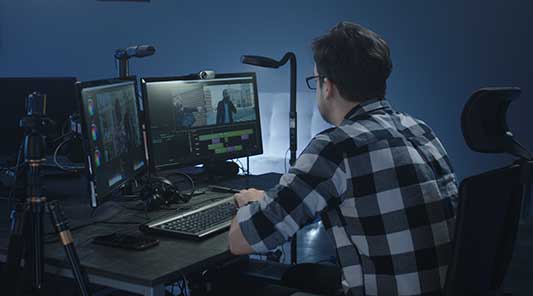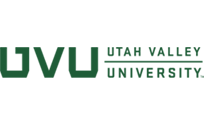Utah Valley University


CatDV teaches [students] important organizational skills and helps them learn to approach a project in a systematic and disciplined manner.

Founding Member, Department of Digital Media, Utah Valley University

Incorporating CatDV into the Digital Media Curriculum
Utah Valley University (UVU) created the world’s first college degree program in digital media in the 1990s, when digital technologies were just coming into the mainstream. In the UVU Department of Digital Media, students learn how to integrate graphics, text animation, video, and audio digital materials to entertain, educate, and communicate ideas through meaningful human interaction.
For the department’s professors and staff, asset management has become increasingly complex over the years. “As our students’ video projects have become larger and more sophisticated, we’ve had to keep track of an exploding volume of multi-terabyte media files,” says Dennis Lisonbee, founding member of the Department of Digital Media. “Previously, we used a standardized file-and-folder scheme to store these files on computer hard drives and taught our students how to search and navigate the folder structure. But we had outgrown these traditional methods as the digital files grew in both numbers and size, and it was taking too long to find and access the assets.”
Implementing Robust Asset Management with CatDV
The department needed a more robust MAM system—one that would not only help the department organize its growing asset volumes but also provide students with some hands-on training. “It was important to adopt a tool that had widespread use in the industry, to give our students a boost once they entered the workforce,” says Lisonbee.
The department chose CatDV. “As one of the media industry’s most widely deployed MAM solutions, supporting some of the world’s most sophisticated media workflows, we knew it would be robust enough to handle even our largest video projects,” says Lisonbee. “At the same time, CatDV is easy to learn and deploy, and offers an extremely low cost of ownership, making it an ideal component of our training curriculum.”
Strengthening MAM Skills
The department placed the software at the core of its “Digital Output for Film” course, a required class for lower-division students that teaches them how to manage assets through a full production workflow. Upper-division students delve into the software even deeper and work with more advanced features for building search terms and working with metadata.
CatDV helps students develop not only specific MAM skills but also more general organizational skills. “CatDV teaches them important organizational skills and helps them learn to approach a project in a systematic and disciplined manner,” says Lisonbee.
Enhancing the Speed and Efficiency of Student Film Projects
The department prides itself on challenging students, for example, requiring seniors to finish a film project that’s more on par with graduate projects in other schools. “The CatDV MAM system plays a critical role in helping students manage their video files and finish their projects on time,” says Lisonbee.
Over the years, UVU student production crews have traveled to many countries to create senior-project documentary films on a wide range of topics. CatDV helps students classify and store the large volume of files they create while on location.
Back home in the production facility, CatDV helps accelerate workflows, enabling students to search for and access assets rapidly. “Speed is of the essence for graduating students who must complete their projects before the term ends,” says Lisonbee, “and CatDV gives them the edge they need to work as efficiently as possible.”
Preparing Students for the Real World
With CatDV as a vital part of the curriculum, students are ready for whatever comes after graduation. “CatDV prepares our students for the real world of film and video production by giving them experience on a system that will take them far in their careers,” says Lisonbee.


